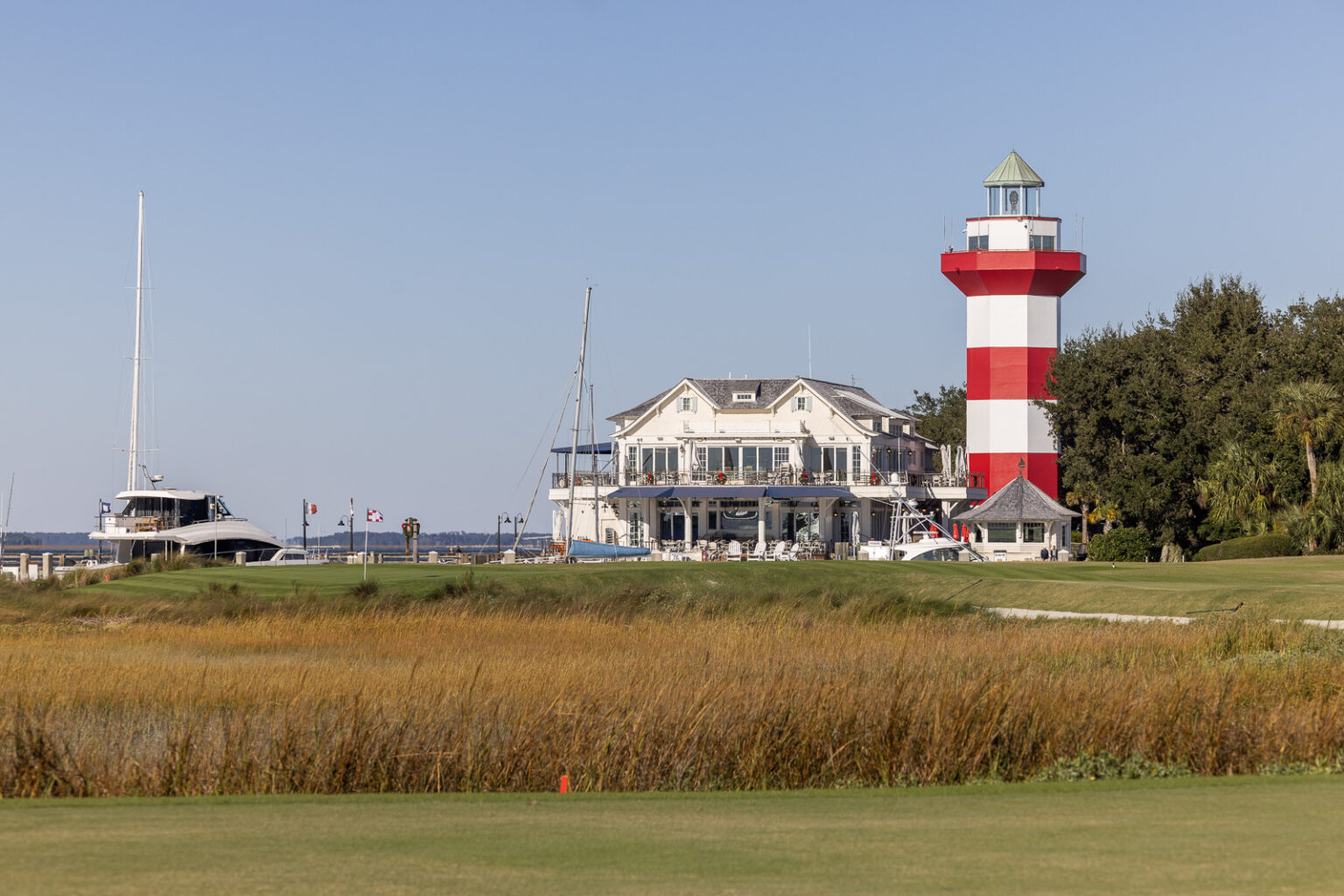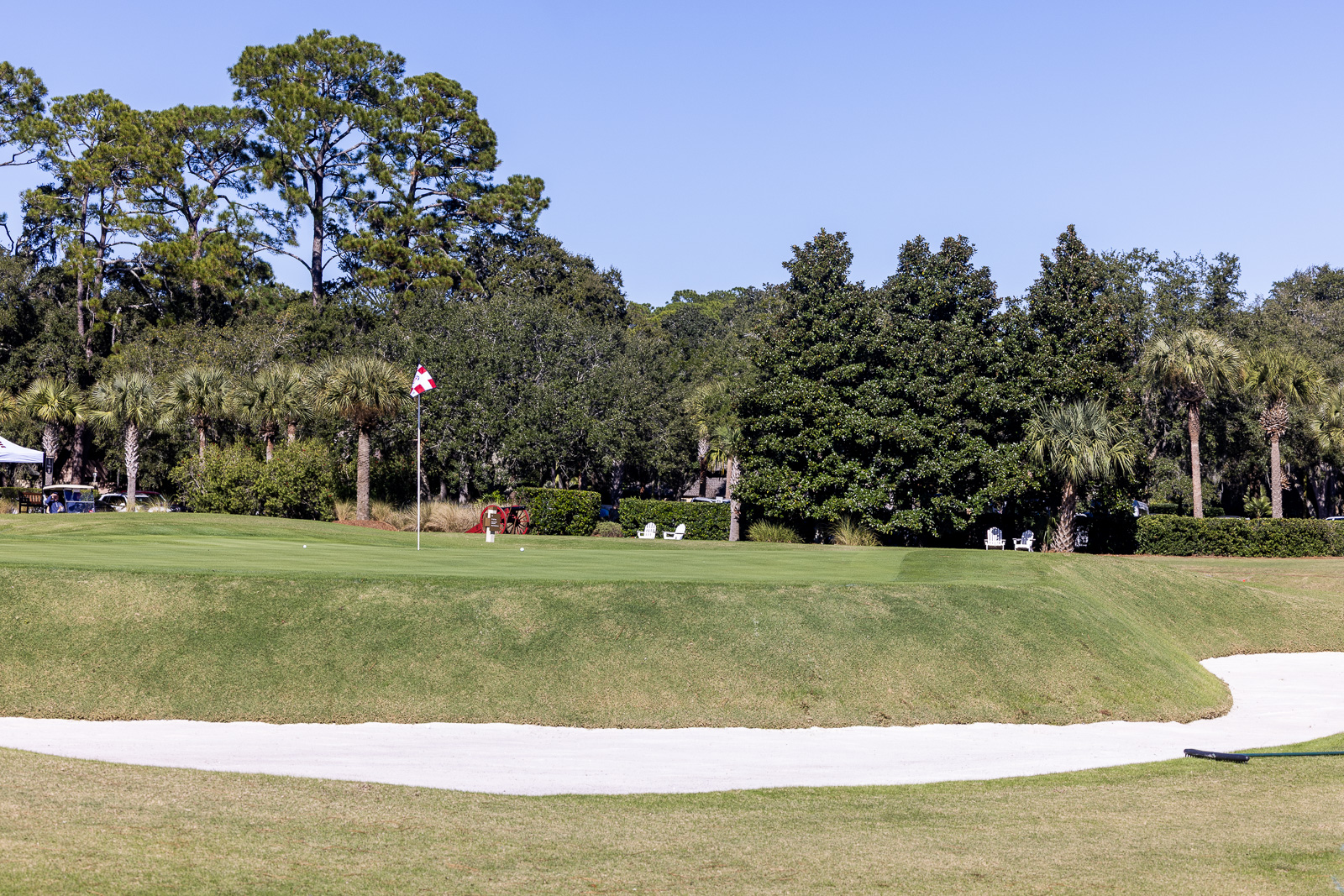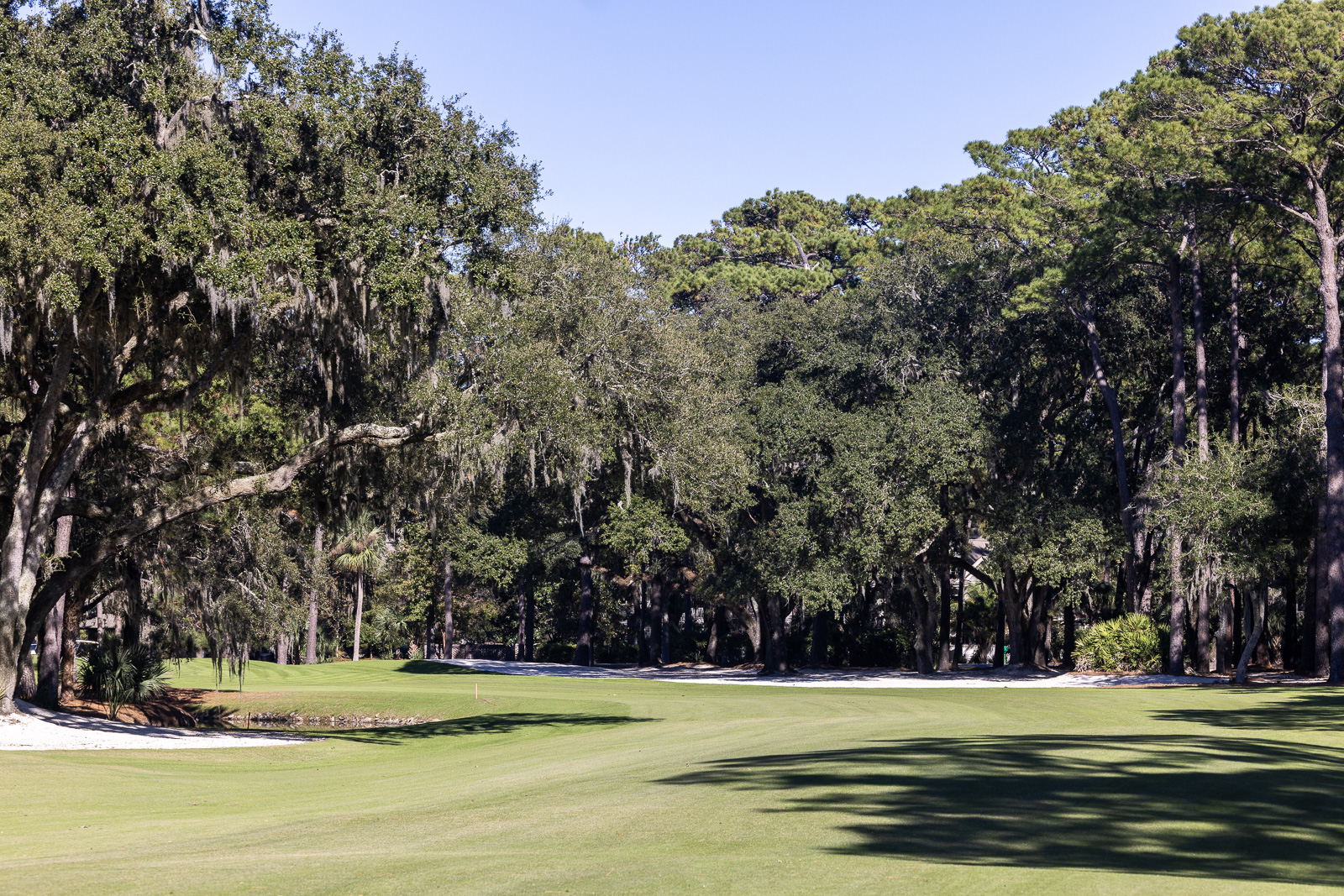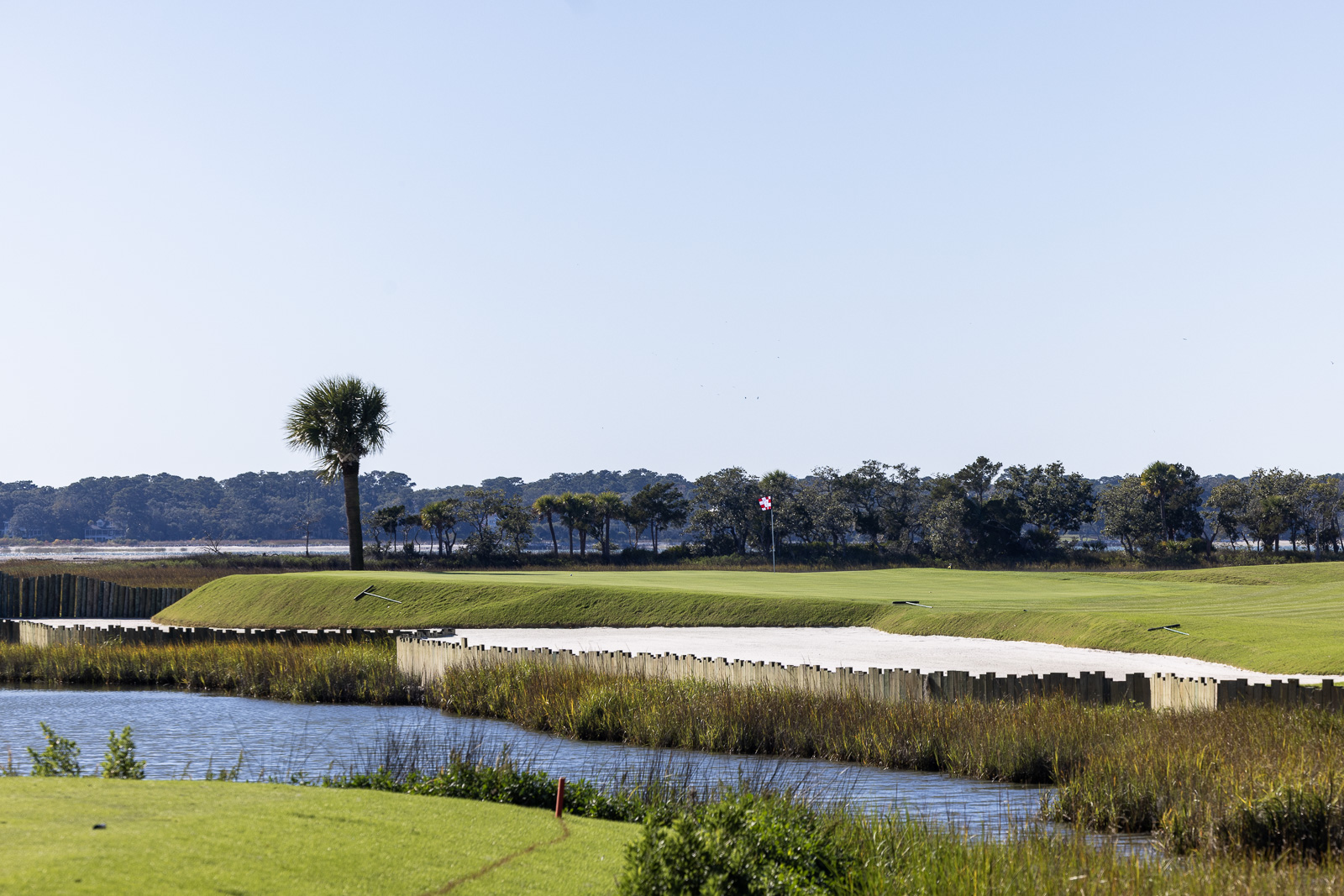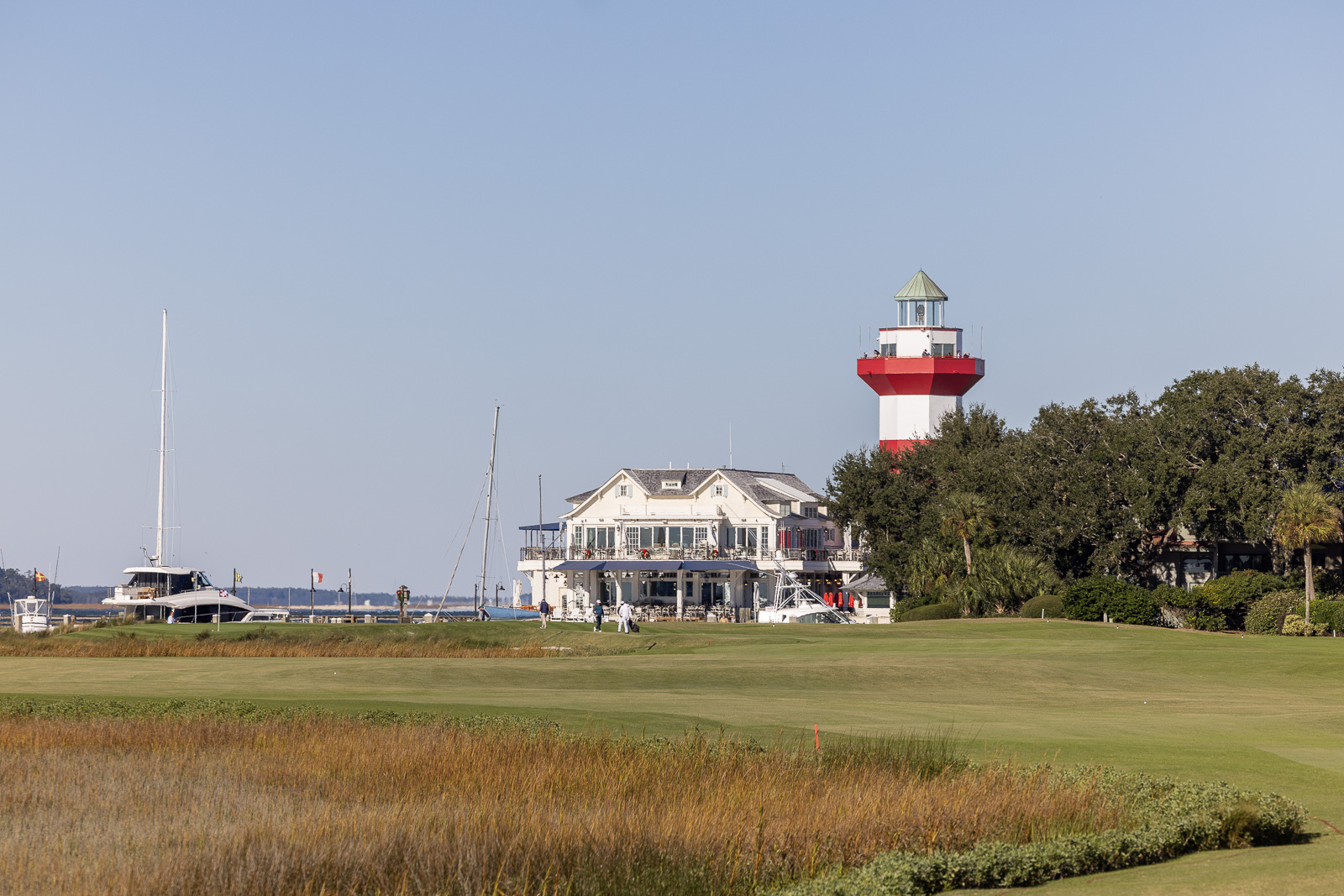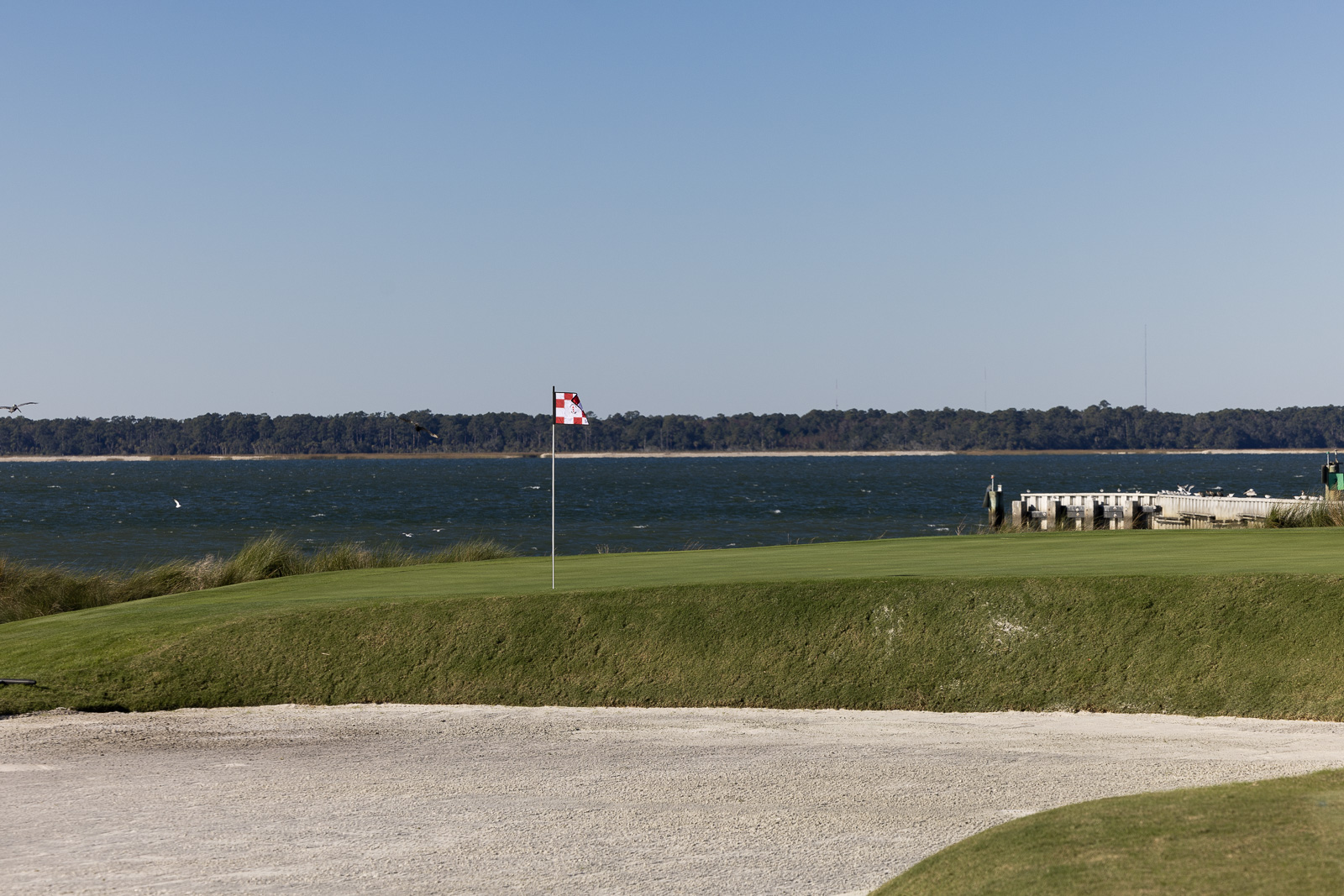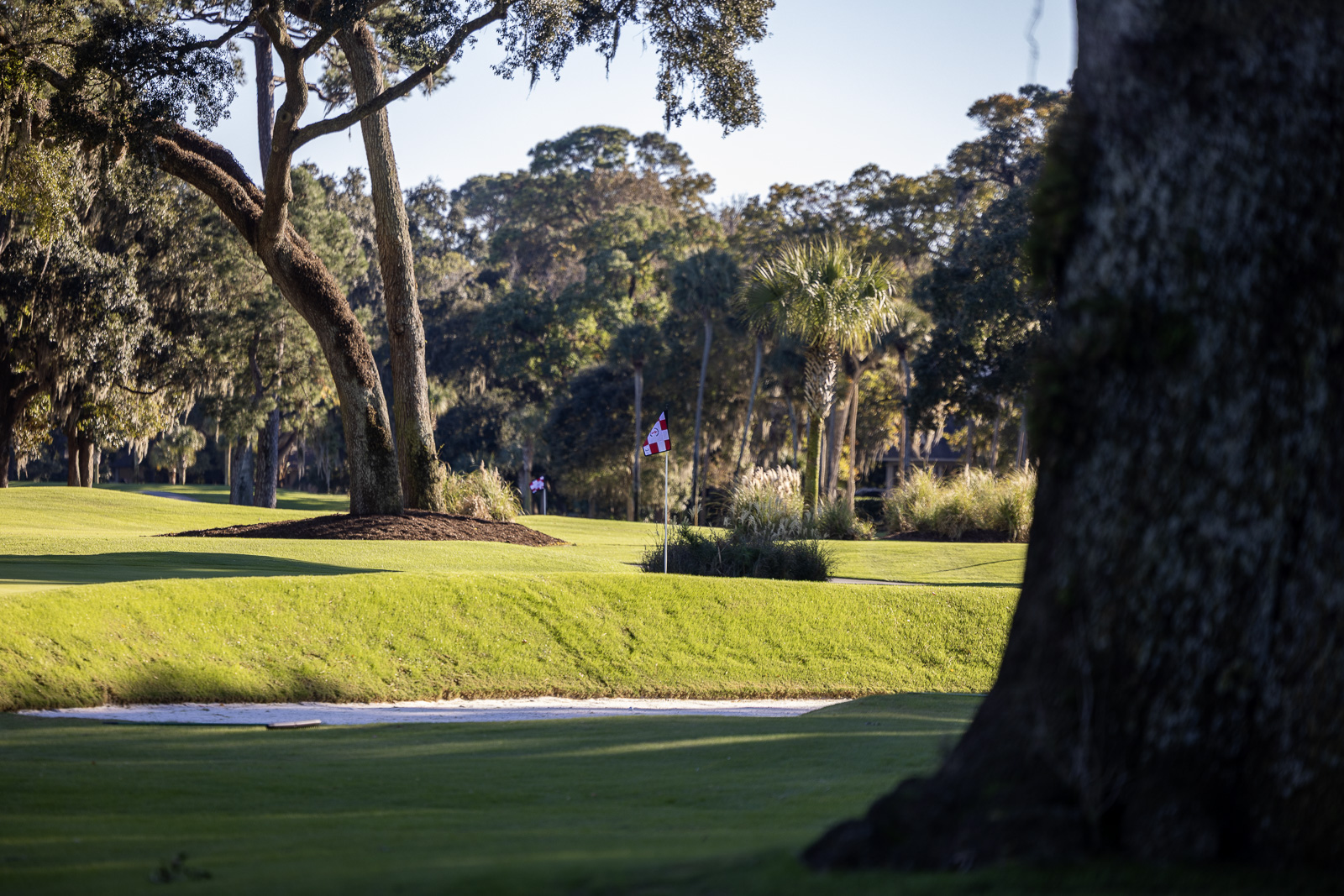My earliest golf memory doesn’t come from a course, a range, or even a set of clubs. It came from a PC.
When my dad brought home our first computer, the only game we had was Links 386 Pro. And the only course that came with it? Harbour Town.
That was my introduction to Pete Dye. To the lighthouse. To those tight corridors and tiny greens.
From the time I was a kid, I knew: One day, I’m going to play that place.
This week, that dream finally happened, and I got to experience the newly renovated Harbour Town Golf Links in all its restored glory.

A Renovation Rooted in Restraint
Most renovations chase modernization. This one chased authenticity.
Led by Love Golf Design with Davis Love III consulting, the project wasn’t meant to reinvent Harbour Town – it was meant to refine it. Make it truer to Pete Dye’s original work. Sharpen the strategic lines that had softened over 50 years of growth and play. And ensure it remains playable for resort guests while still testing the best players on earth at the RBC Heritage.
Love III put it best: unless you play the course a lot, you might not even notice many of the changes.
But make no mistake: the details matter:
- New stacked-sod bunker faces.
- Restored green edges.
- Rebuilt bulkheads.
- A few select tree moves.
- Modernized infrastructure under the surface.
The result? A course that feels more like Harbour Town than ever.
And it’s fantastic.
First Impressions: Lighthouse Sightings and One Wild Green
I arrived the night before in the dark, which is not ideal when you’ve waited decades to see a place. But it did make the walk to dinner surreal. Five minutes from the Inn at Harbour Town, I rounded the corner toward the Quarterdeck restaurant and saw it: the iconic lighthouse glowing against the night sky.
Few landmarks in golf are more recognizable, and seeing it in person for the first time genuinely stopped me in my tracks.
The next morning, I opened my window and was stunned. Sunshine poured onto the first tee, the clubhouse, and the ninth green, which is among the most unique I’ve ever seen.
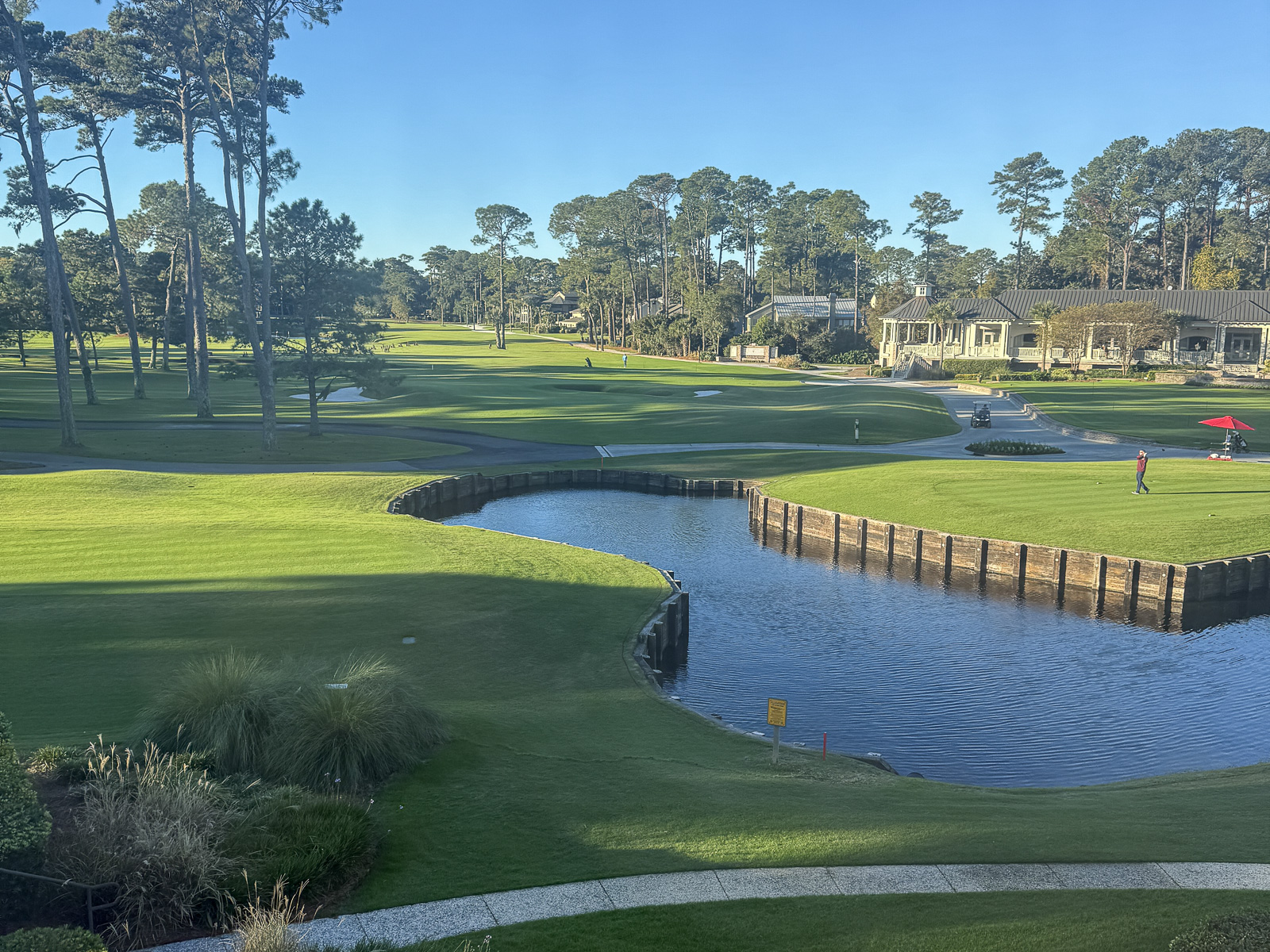
If a modern architect built the horseshoe green on No. 9 today, complete with bunkers in the middle, the architecture crowd might riot. But here? It’s perfect. It fits. And as part of a drivable par 4, it’s an absolute blast.
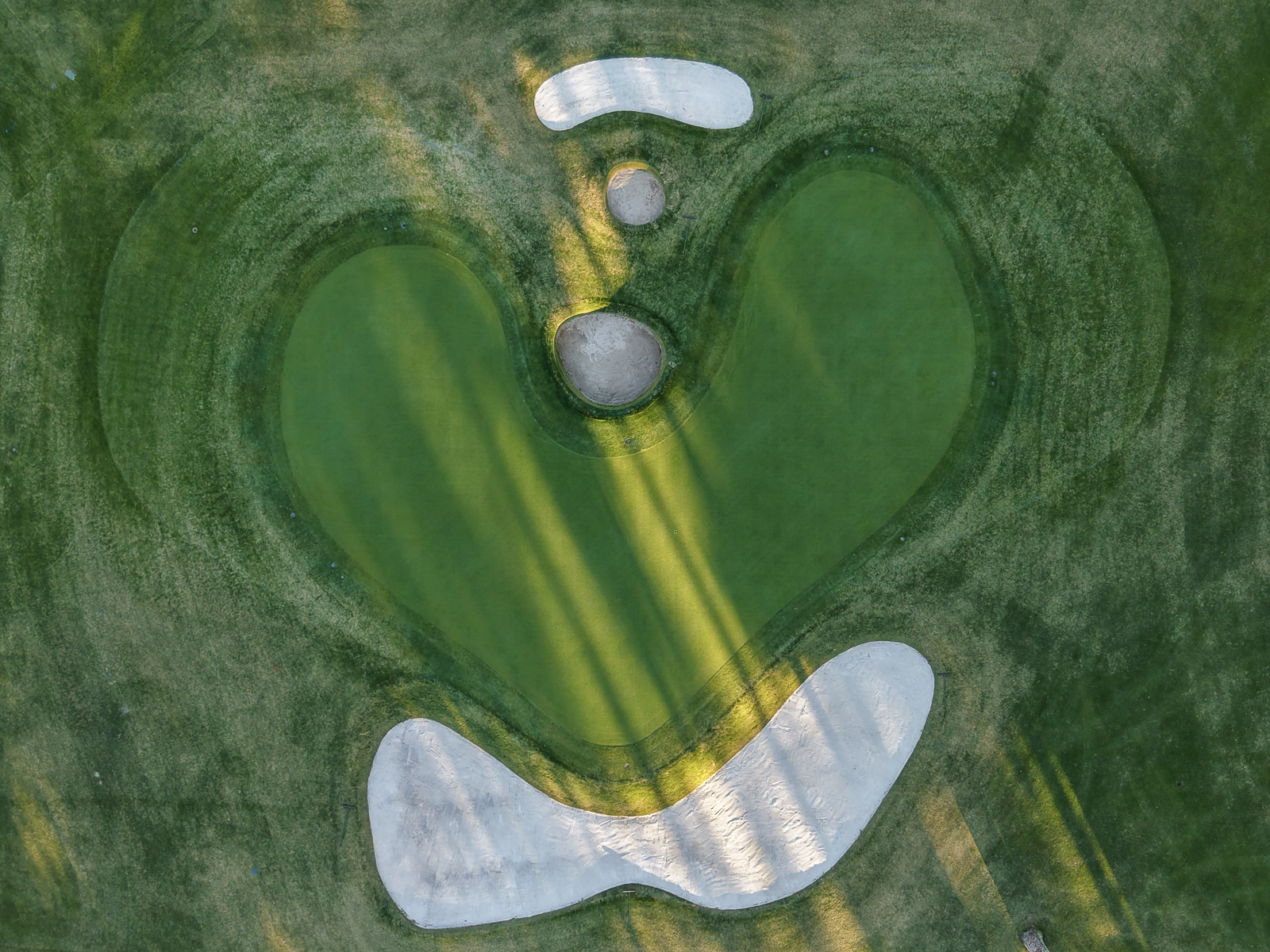
Even the driving range carries the Harbour Town DNA, with raised bulkheaded greens with railroad ties. I wasn’t expecting that, and it immediately set the tone: this place has character, everywhere you look.
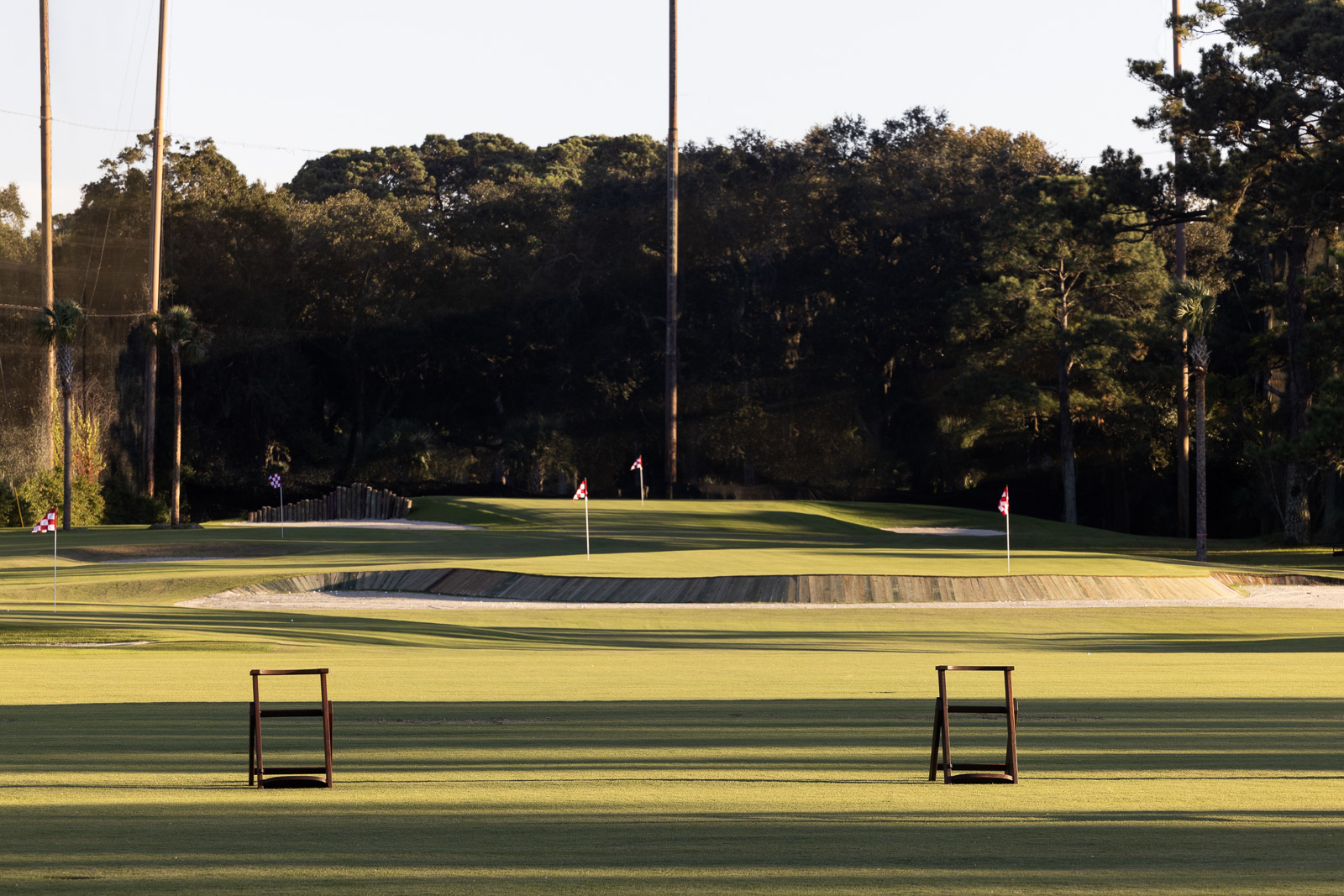
Is Harbour Town Really That Tight?
Short answer: yes… but also no.
I expected claustrophobia, and to be hitting iron off every tee.
Instead, I was pleasantly surprised.
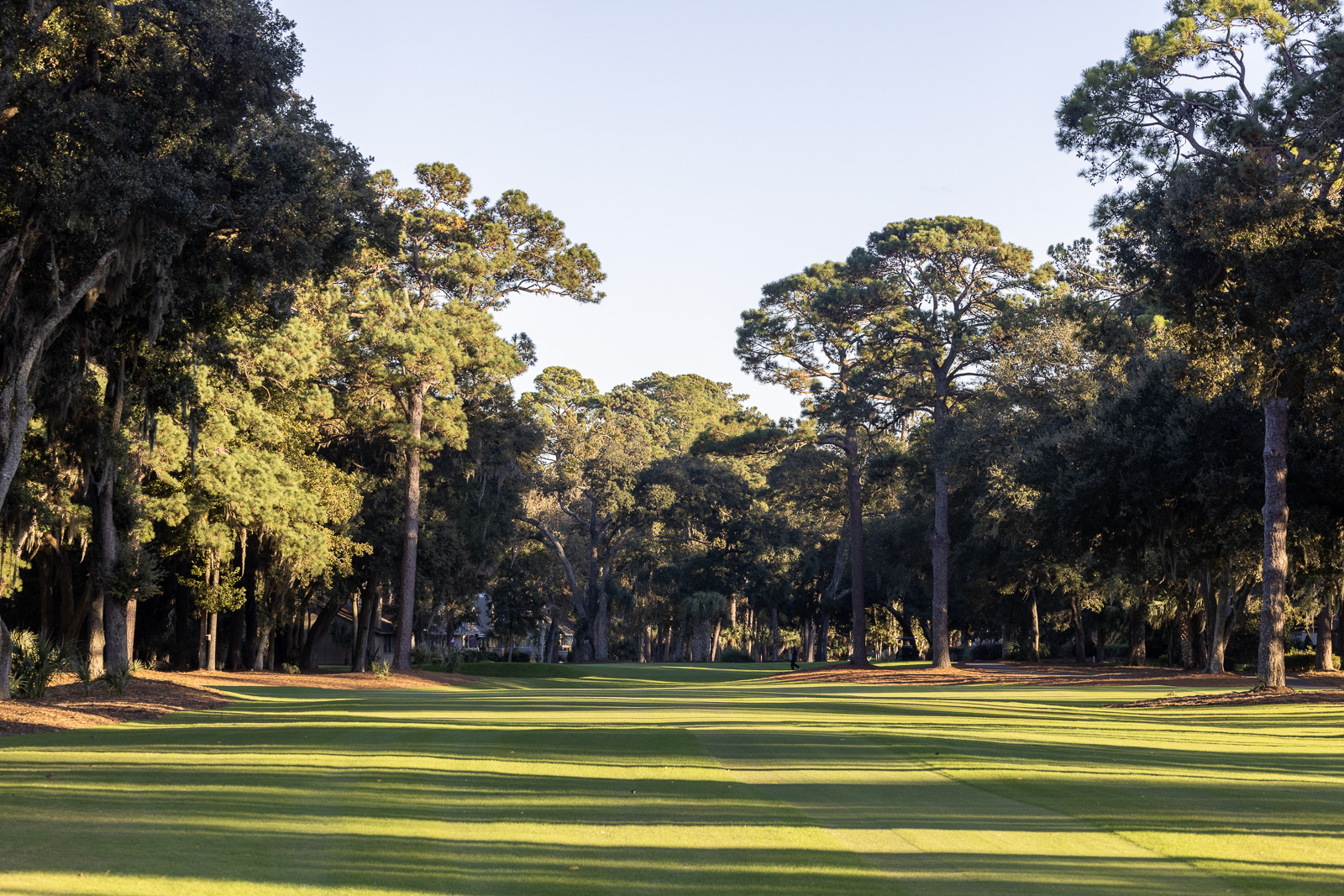
Harbour Town is tighter than most modern resort courses, but it never feels suffocating. I hit driver far more than I expected, and despite my less-than-elite ability to keep it between tree lines, the course never felt unfair. It rewards confidence and punishes indecision — a Dye trademark — but not in a way that ruins your day.
Instead, it brings out something I didn’t expect: creativity.
Not Bandon Dunes creativity — that wide-open, wind-shaping, aerial-or-ground game kind of creativity.
This is the opposite: tree-based creativity. Over, under, around, you name it. And somehow, I loved it.
Trees can be polarizing in golf architecture. But at Harbour Town, the ones that matter… matter a lot.
The biggest example? The tree at No. 5. During the renovation, it was uprooted and moved about 20 feet closer to the fairway. It now influences a third of the green complex. They didn’t just keep that design feature, but rather they leaned into it.
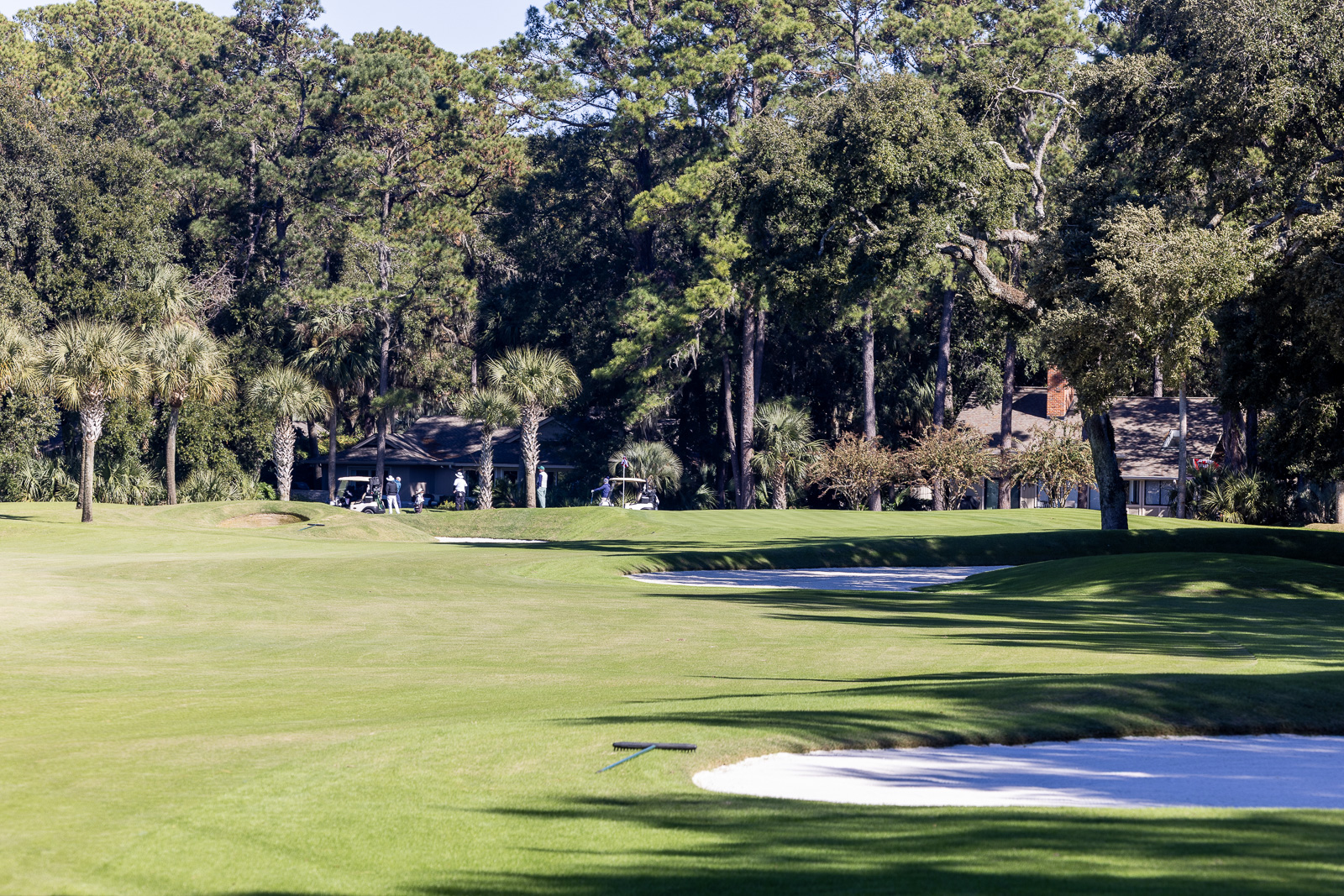
Same on the par-3 seventh. From the tee, you see trees flanking the entrance, but it’s not until you’re standing on the green looking back that you realize you’re essentially splitting uprights. The newly expanded green gives more hole locations, but the trees? They still dictate the shot.
Harbour Town doesn’t apologize for its trees. It uses them.
A Course Players Begged Them Not to Change
One story kept coming up throughout the day.
Back in 1999, during the previous renovation, PGA Tour players like Tom Watson, Peter Jacobsen, and Lanny Wadkins begged the designers not to change the essence of Harbour Town. “We love this place. Don’t lose what makes it special.”
Fast-forward to this renovation, and players like Scottie Scheffler and Justin Thomas were reportedly saying the exact same thing.
Sea Pines Resort listened.
They even said publicly: unless you play Harbour Town constantly, you might not notice much difference at all.
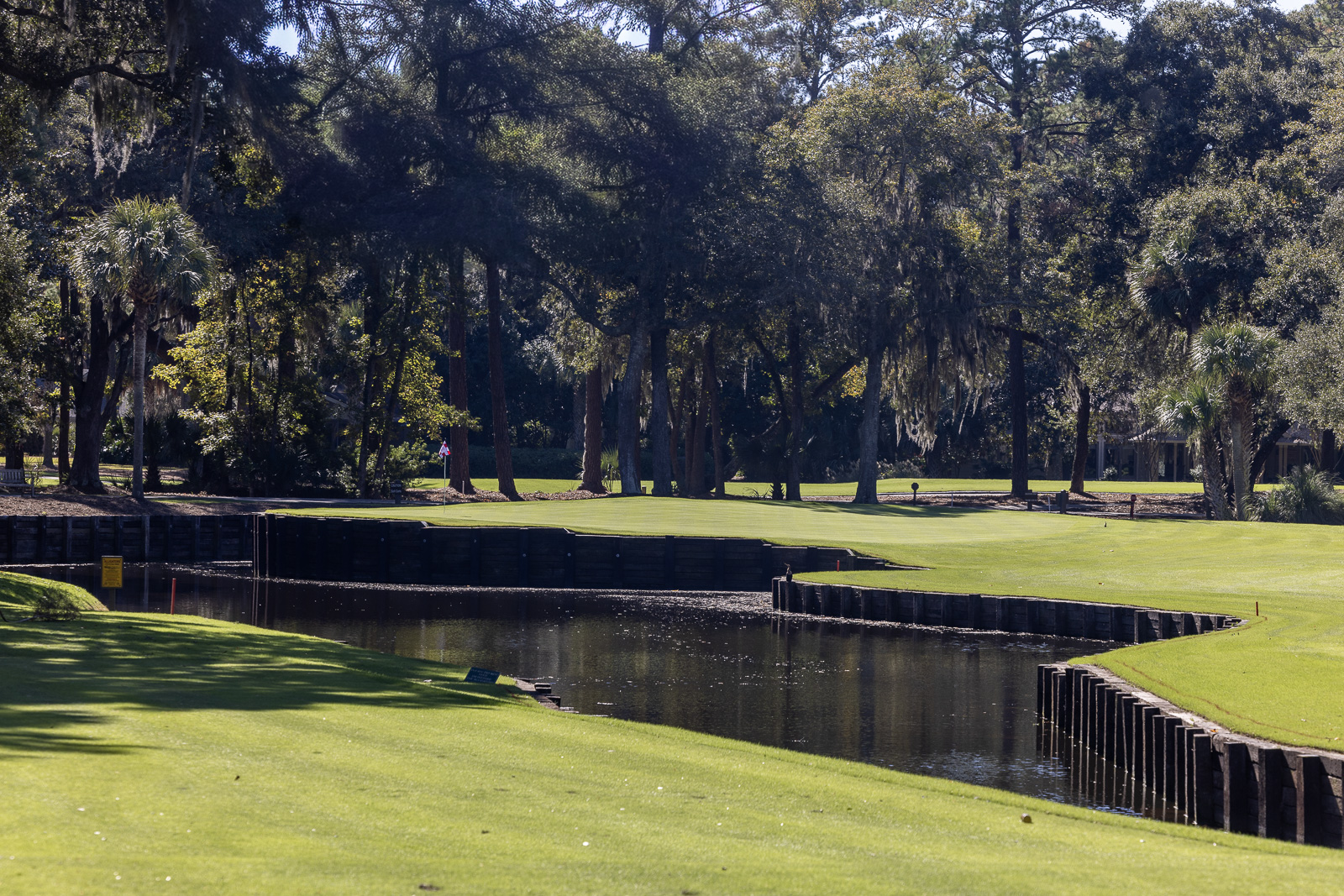
I wish I’d seen the old version to compare, but knowing its history, it’s refreshing to see early Pete Dye work preserved rather than modernized into oblivion.
The closest thing I’ve seen to this is The Golf Club in New Albany, Ohio. But that’s not exactly a place the average golfer gets an opportunity to experience.
Restoring Dye’s Vision: Stacked Sod, Green Expansions, and Dye Lines Revealed
One of the most visually striking updates is the return of stacked-sod bunker faces on holes throughout the course. This is a feature Dye originally intended, but they had to be changed because they deteriorated too quickly.
Thanks to modern bunker technology, many of these faces now use synthetic turf engineered to look (and feel) exactly like real sod. They’re far more durable, and they bring back a look Harbour Town hasn’t consistently had in years.
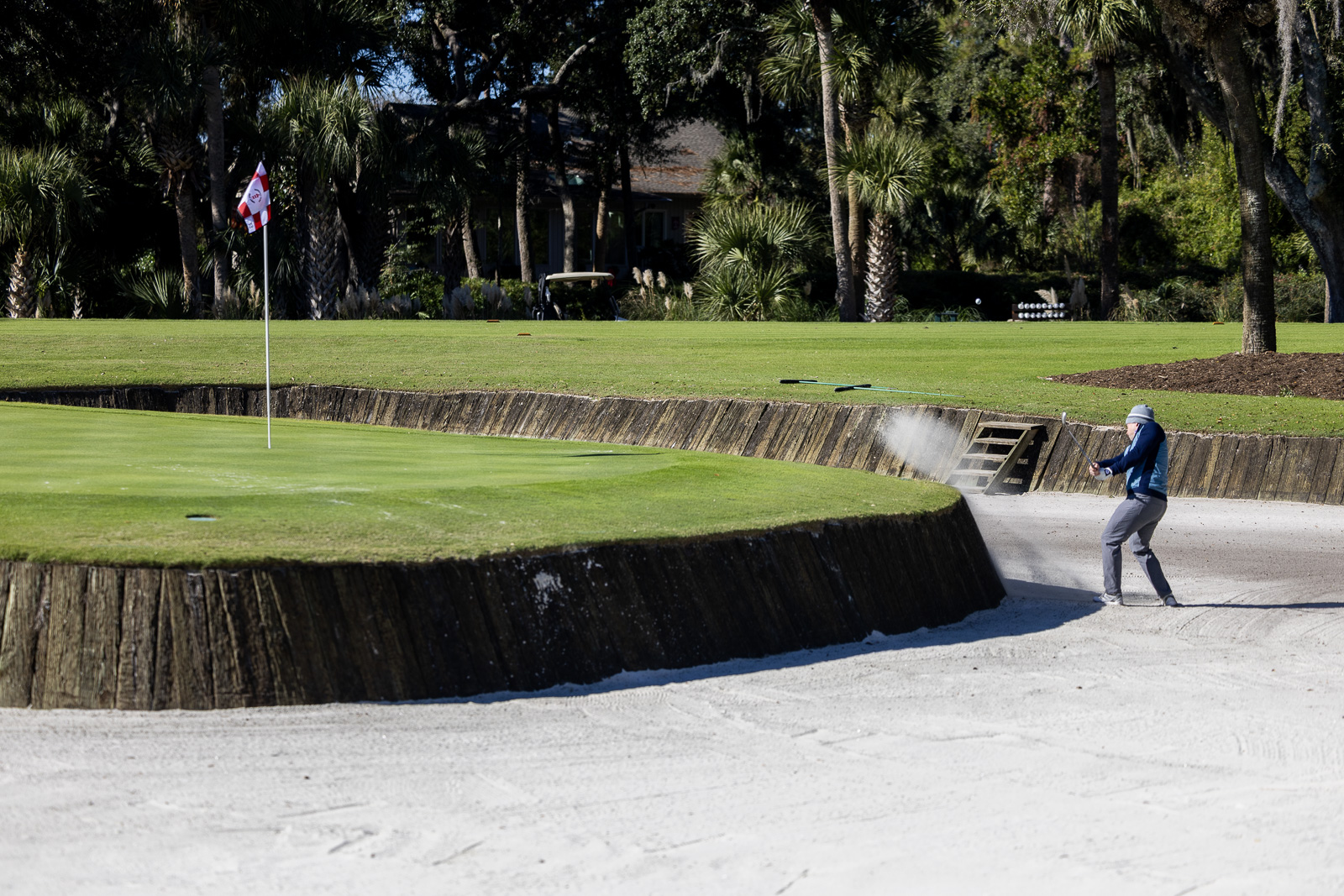
The team also expanded greens on numerous holes, restoring lost edges and opening up new pin positions, which is particularly important on a course famous for its small targets.
And of course, all the bulkheads were rebuilt. Harbour Town’s wood features are iconic, but wood doesn’t last forever. They look sharper now than they have in years.
The Finishing Stretch: Holes 13–18 Are World Class
The front nine is solid, really solid, but the course shifts gears when you hit No. 13.
Par 4, 13th: A Wild Green Complex

The green has a little tongue dipping into the bunkers that reminds me of the short par-3 15th at LACC. Only here, the bunkering is more dramatic, framed by those Harbour Town railroad ties. It’s one of the coolest green complexes I’ve played in a long time.
Par 3, 14th: Fear and Beauty
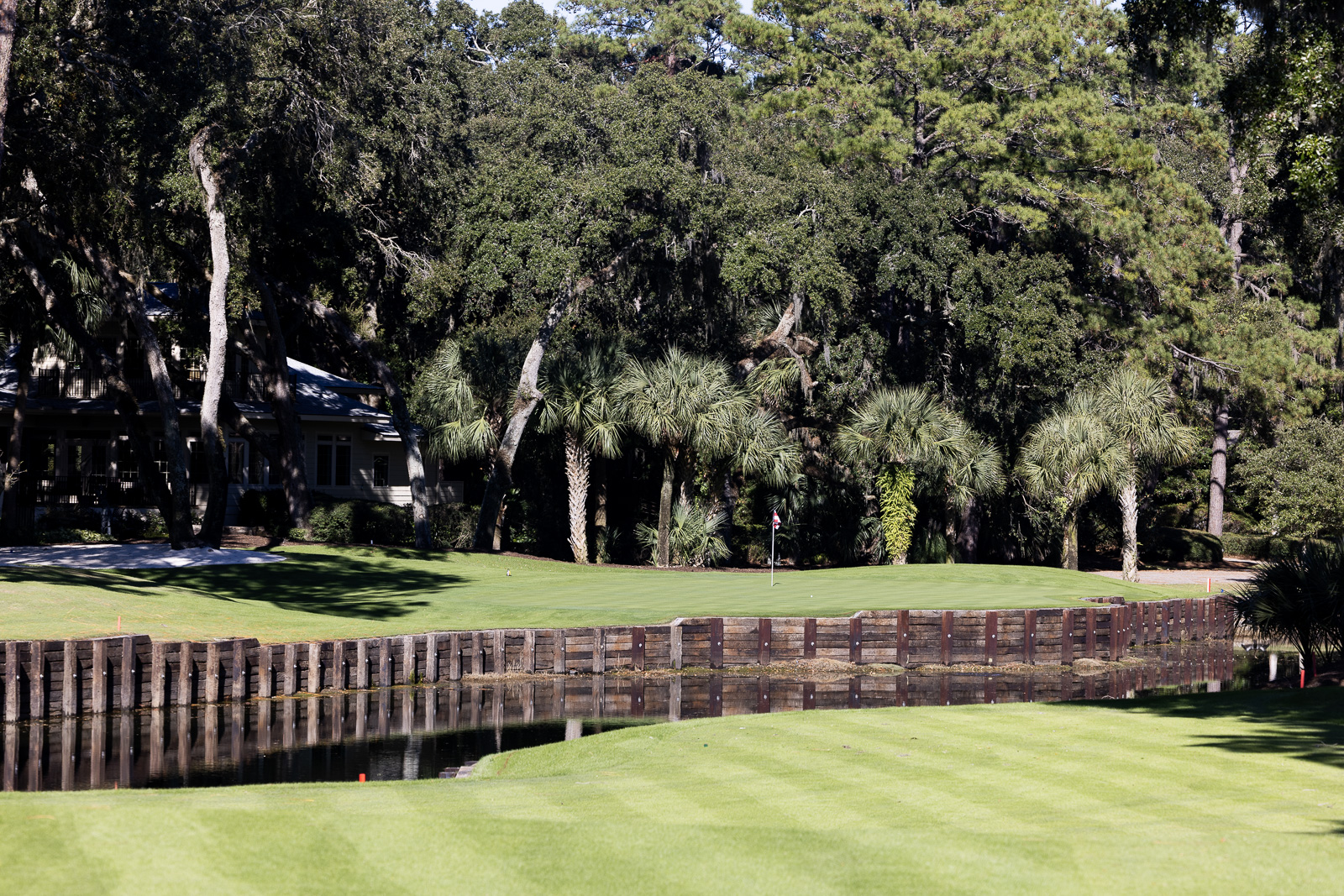
A demanding par 3 with water lurking down the right. During the renovation, they subtly enlarged the back bunker. This is a change that won’t affect resort players much, but will absolutely matter during the RBC Heritage when the pin sits back left.
Par 5, 15th: Quietly Brilliant
Long hitters have started taking a crack at this one in two. To keep things interesting, the green was reshaped to allow more diverse pins. It’s still gettable, but more nuanced now.
Par 4, 16th: Strategic Perfection

One of my favorite holes on the course. A bunker guards the entire left side near the green. The more aggressive your tee shot, the better the angle. Lay back, and the second shot gets exponentially harder, fronted by a deep bunker with trouble behind.
Par 3, 17th: Beauty, Brawn, and the Marshland Breeze
This hole takes you out into the open, where the wind becomes a real factor. Miss long and you might have a shot. Miss too long and you’re dead. It’s beautiful, intimidating, and pure Harbour Town.

Par 4, 18th: As Iconic As It Gets
Only on the final tee do you get your first playing view of the lighthouse. The fairway is wide, but the angle is everything. Left leaves a terrifying carry to a tiny target. Right gives you room. It’s iconic for a reason, and it lived up to every expectation.
Final Thoughts: A Renovation Worth Celebrating
Harbour Town has long been considered one of the most unique strategic tests in American golf. After this renovation, it’s even better.
One golf writer I met at the reopening, a guy who’s played more courses than just about anyone I know, said confidently:
“Top 50. I think this is top 50 in the country. You just don’t see anything like it.”
Hard to argue.
With green fees starting around $399 and climbing from there, it’s definitely a splurge. But bucket-list courses are bucket-lists for a reason. And if you’ve ever wanted to see Harbour Town, now is absolutely the time.
It has never looked better. And for me? It was everything my childhood self hoped it would be.

